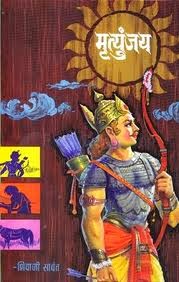Movie Review: Ajintha
 The 2012 Marathi film "Ajintha" begins with an rivetting recollection of a hunting expedition in 1819 when Captain John Smith accidentally discovers an entrance to the world famous Ajanta (Ajintha) caves, which date back to 200 BC during the Satavahana dynasty. It is following this incident when Robert Gill, a British official from the Madras Presidency is called to recreate the paintings and enlighten the world about Ajintha's rich history and glory.
The 2012 Marathi film "Ajintha" begins with an rivetting recollection of a hunting expedition in 1819 when Captain John Smith accidentally discovers an entrance to the world famous Ajanta (Ajintha) caves, which date back to 200 BC during the Satavahana dynasty. It is following this incident when Robert Gill, a British official from the Madras Presidency is called to recreate the paintings and enlighten the world about Ajintha's rich history and glory. Ajintha is a period film set in the 18th century which revolves around the truth of Ajanta and the untold love story between the British officer Robert Gill who fell in love with Paro, a tribal woman from the Bhill community. Paro, the dusky Indian woman belonged to the village of Lenapur which is closest to the world renowned caves. The film goes on to explore the important role the village played to find the essence of Ajanta which later became known for its exotic paintings, impressive architecture and a forgotten history.
When Major Gill grows anxious about the delay in getting the colours, the film beautifully explores how Paro chooses to get the colours made through natural sources and she busies herself in helping him out at the site. She ends up becoming his muse since he believes that he is unable to work without her presence. To the world Major Gill speaks in English but with Paro, he has his own language which does not involve words as she brings alive the world of exquisite paintings and Gill is steadily drawn towards her.
The story written by senior writer N.D. Mahanor celebrates the spirit and soul of the heritage site and uses the tale surrounding the caves to depict a beautiful and untold piece of history of the 19th century. As a filmmaker, it is only Nitin Desai who could have realized and executed the true vision of N.D. Mahanor. The film is a visual treat and leaves behind a stunning cinematic experience. The beauty of the Caves and the nearby village has been captured gloriously by Rajiv Jain. The music by Kaushal S. Inamdar which is graced with the lyrics of N.D. Mahanor blend seamlessly in the film. An interesting choice of singers to sing each song in the movie also makes it a collector's item. Sonalee Kulkarni flaunts her body with tremendous grace despite wearing revealing costumes designed by Neeta Lulla. Yet, the costumes do not qualify as "vulgar". The way she moulds her character to become Paro is much appreciated and she delivers even in the emotional scenes. English theatre actor Phillip Wallace Scott also deserves praise for his commendable role as Robert Gill, who later went on to build a memorial for Paro.


Comments